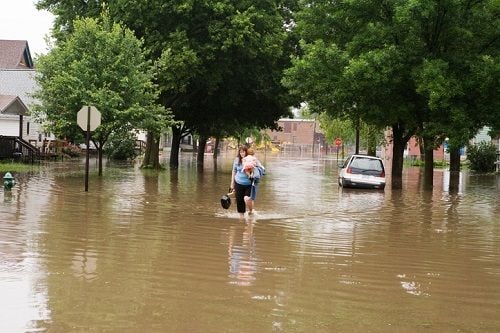

Canada is no stranger to weird weather. In the past few months alone, we’ve seen a cluster of tornadoes tear through eastern Ontario and southern Quebec, severe flash flooding in Toronto’s downtown core, and a heatwave that contributed to the deaths of at least 30 people – and that’s only counting summer / early fall events! We all know the weather monstrosities the Canadian winters can bring.
According to a Canadian Institute of Actuaries (CIA) extreme weather index, Canadian weather is only getting weirder. Across Canada, temperatures have been rising in recent years. The CIA extreme weather index suggests hot days have exceeded the normal number every quarter since the winter of 2015, and it’s getting wetter too. Across Canada, the average number of days with heavy rain or snow has been outside the norm since spring 2013, and, in Ontario and Quebec, it’s been since winter 2008.
As weather patterns evolve, so must the insurance industry. The growing intensity and severity of natural disasters requires a new level of proactivity from insurers and brokers on the front-end, as well as heightened levels of customer service and support during and after weather-related events.
According to the Insurance Bureau of Canada (IBC), the Ottawa-Gatineau tornadoes that struck on September 21, 2018, caused total insured damages of close to $295 million. When split between the two affected cities, Ottawa saw more than $192 million in insured damage to homes, businesses, and vehicles, while Gatineau suffered over $102 million in damage. Brian Irwin, president of the Ottawa Insurance Brokers Association (OIBA), and advisor and broker at Currey Insurance Agencies, described his local area as “just mayhem” and “like a warzone”.
In times of catastrophe, client communication is key. Most people, if they’re lucky, only converse with their insurance broker or carrier once a year during their annual policy renewal. If a homeowner suddenly finds their power cut and their roof blown off in a freak tornado, they might not know who to call and how to start a claim. The person they’re highly likely to reach out to in this scenario is their trusted broker or insurance advisor.
“Insurance brokers are on the front-line for insureds when it comes to catastrophe response. It’s their clients that are directly impacted by these events and are demanding information from someone they can trust,” said Shane Swinson, senior vice president, insurance portfolio, FirstOnSite Restoration. “One of the biggest challenges in major events like the Ottawa tornadoes is that people can sometimes get lost in the size of the event. The tornadoes left roughly 60,000 people in the Ottawa-Gatineau region without power, and when you have an event of that scale, it’s easy for an insured to feel insignificant. It’s really important for anyone responding to the event – whether it’s a restoration company like us or an insurance broker – to bring that human touch and communicate with everyone affected to reassure them their claim is important.”
FirstOnSite Restoration is one of the most active restoration companies in the Canadian market. Swinson describes the restoration firm as an “extension of the broker’s personal touch” during a time of catastrophe. “As restoration experts, we work with insurance brokers to help them communicate with their insureds,” he added. “We’re completely transparent about what resources we have and how we’re deploying them so that everyone is well aware of the situation and our process.”
Sometimes, communication is the toughest challenge of all. The Ottawa tornadoes left 60,000 people without power, immediately shutting off most phone and internet connections. During the Fort McMurray and B.C. wildfires out west, many homeowners were forced to flee their homes under mandatory evacuation orders. How can insurance brokers communicate with clients who have been displaced from their homes and are difficult to contact? In such extreme situations, creativity is key.
“In a live situation, brokers should be using every channel possible to communicate with and reassure clients,” said Marie Schultz, communications consultant at Saskatchewan Government Insurance (SGI). “They should be telling them what expenses can be claimed and how to live in the meantime if they have been evacuated from [or have a serious problem with] their homes.
“Social media is a really important tool. Sites like Facebook and Twitter are an excellent way to communicate with clients and the media in a time of catastrophe. They allow us to make regular updates and answer people’s questions as quickly as possible. Situations can sometimes blow out of proportion on social media, but we can use these channels to reassure people and make sure the correct information is out there.”
